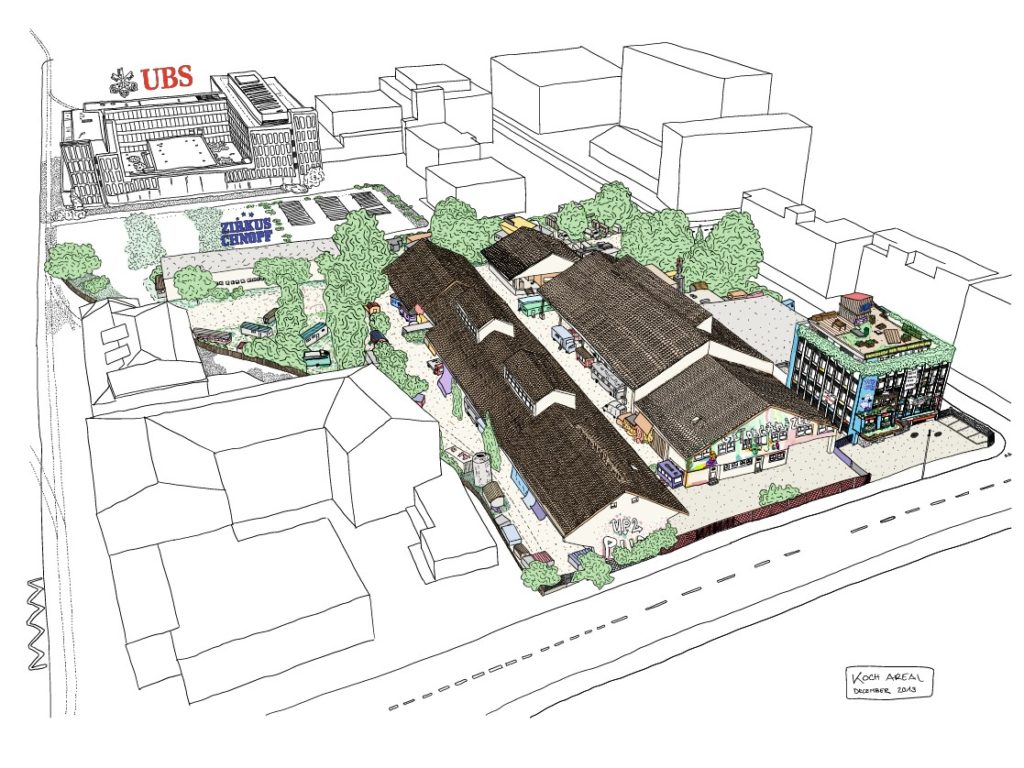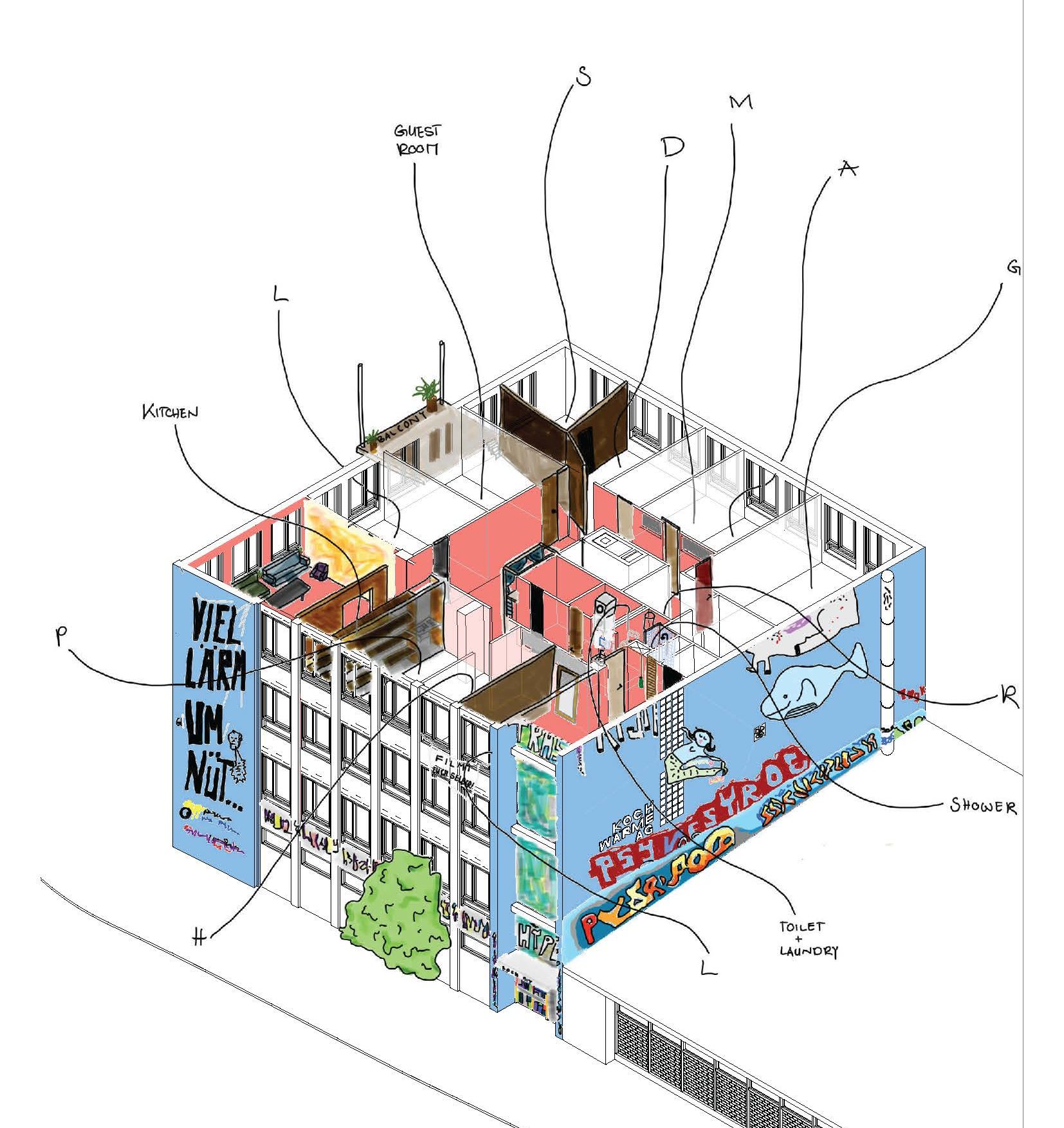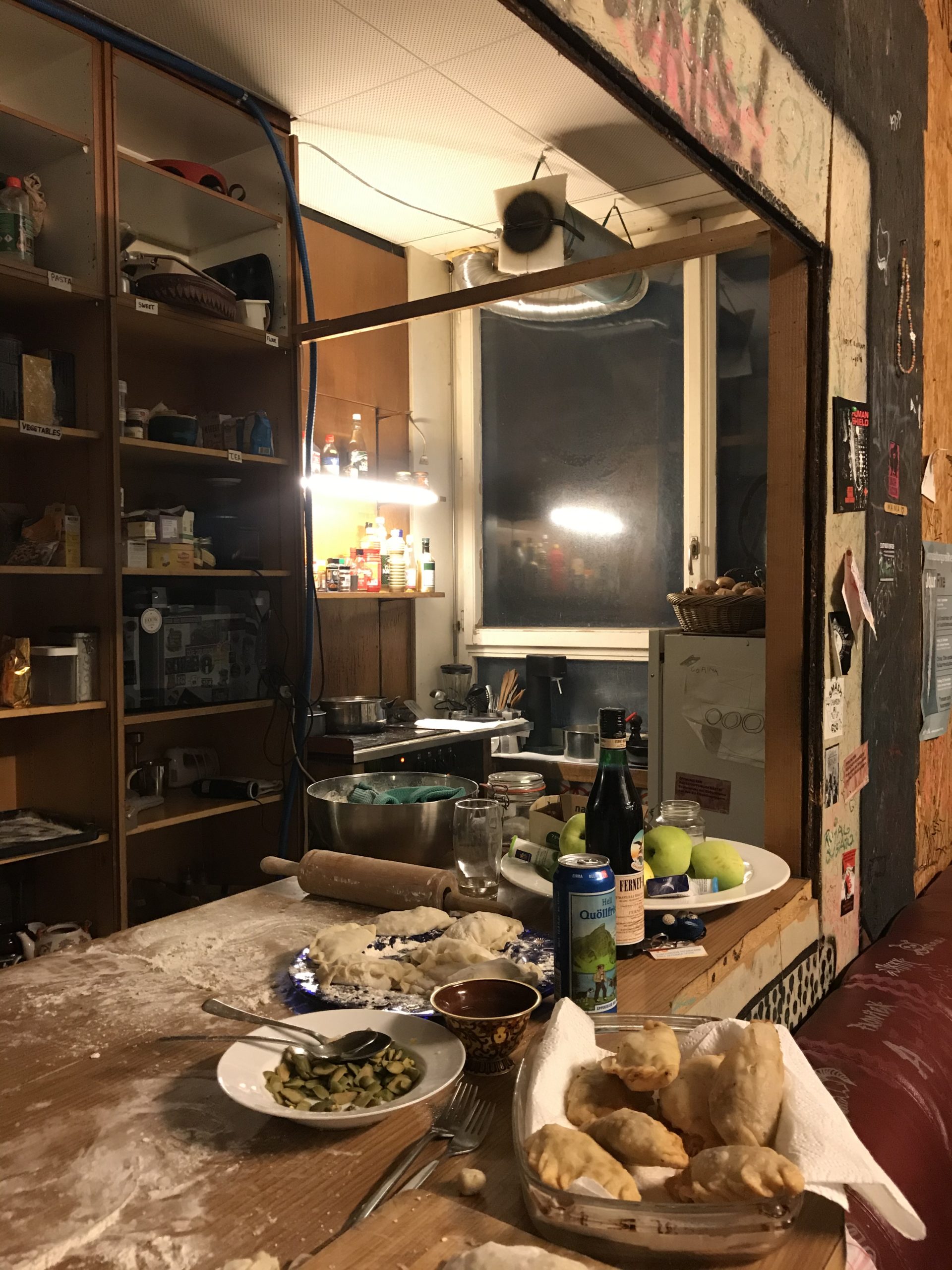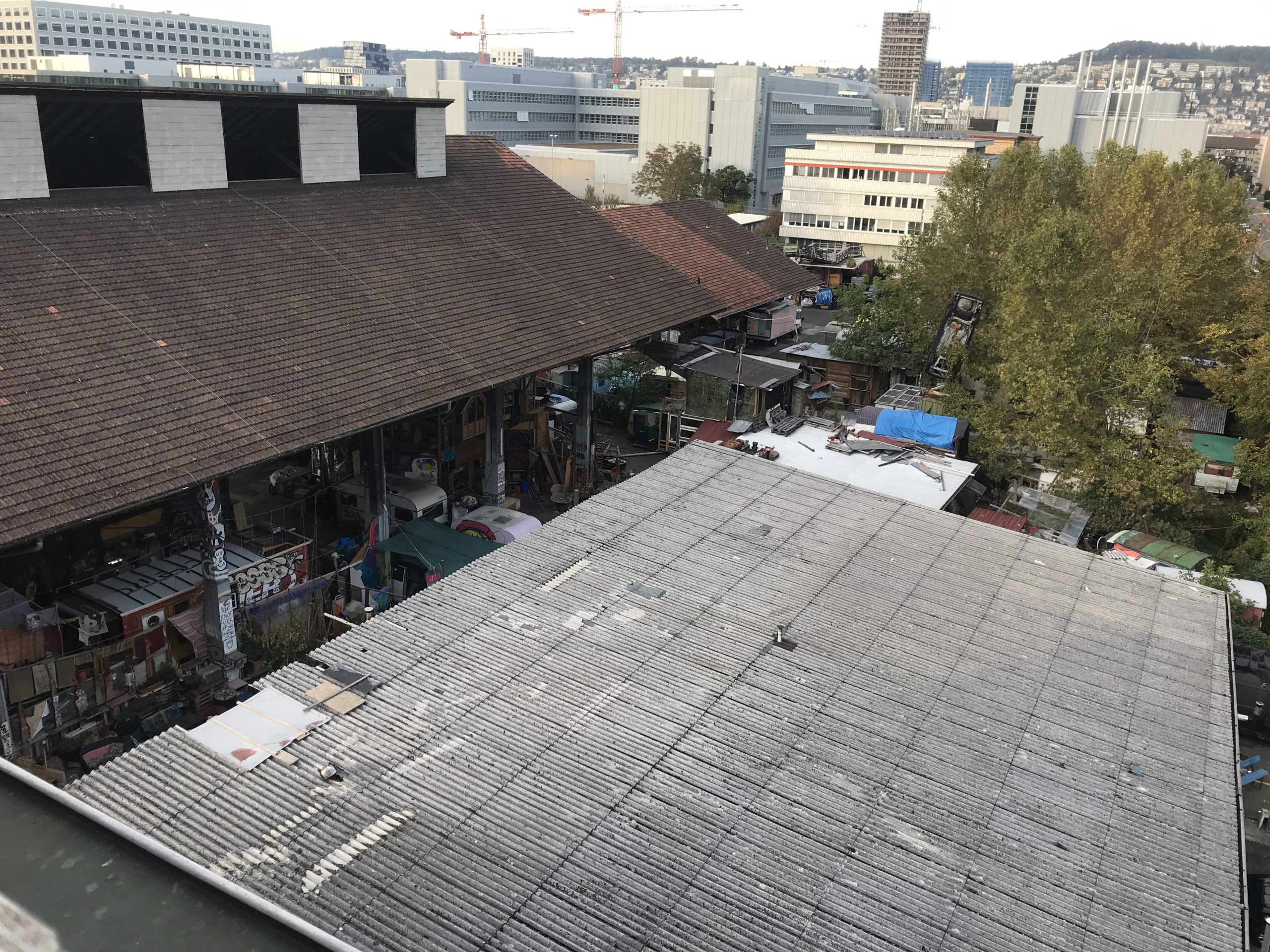Züri Kocht
The Potential of Temporality
The Potential of Temporality

In a time where new housing and institutions are being built,
gentrification is spreading in all directions and the city centre is being
socially cleansed, ideological squats oppose an alternative and
parallel way of living. The most prominent and recent example in the
city of Zurich is Koch Areal (2013-202?). The squat is organized
through the logic of kitchens, which at the same time are the most
important common – pool resource. Other elements such as the
rooftop terrace, the staircase, the café or the workshop are common
recourses in squats were already mentioned in publications in the
1980s. The appropriation of space, the spontaneous interventions
and decisions are a central part of squatting. Through
institutionalization the aspect of temporality- which in squats plays a
crucial role – is eliminated and therefore many qualities of the
communal living get lost.
Stahel, Thomas. Wo-Wo-Wonige!. 2006, Zürich
Burgum, Samuel. This City Is An Archive: Squatting History and
Urban Authority. Journal of Urban History. 2020, Sheffield
Van der Steen Bart, Katzeff Ask, Van Hoogenhuijze Leendert. The
City Is Ours: Squatting and Autonomous Movements in Europe from
the 1970s to the Present. 2020, Chicago.
Martínez, Miguel A., Polanska, Dominika V. Squatting and Urban
Commons: Creating Alternatives to Neoliberalism. PArtecipazione e
COnflitto, November 15 2020, Salento.
Debelle dos Santos, Galvão. Squatting, Commons and Conflict: A
Discussion of Squatting’s Challenges to the Commons.
PArtecipazione e COnflitto, November 15 2020, Salento.
Image 1 –
Collective Spaces at Blue House
Leandra Graf, 2021

Image 2 –
Kitchen at Blue House
Leandra Graf, 2021

Image 3 –
Koch Areal
Leandra Graf, 2021
